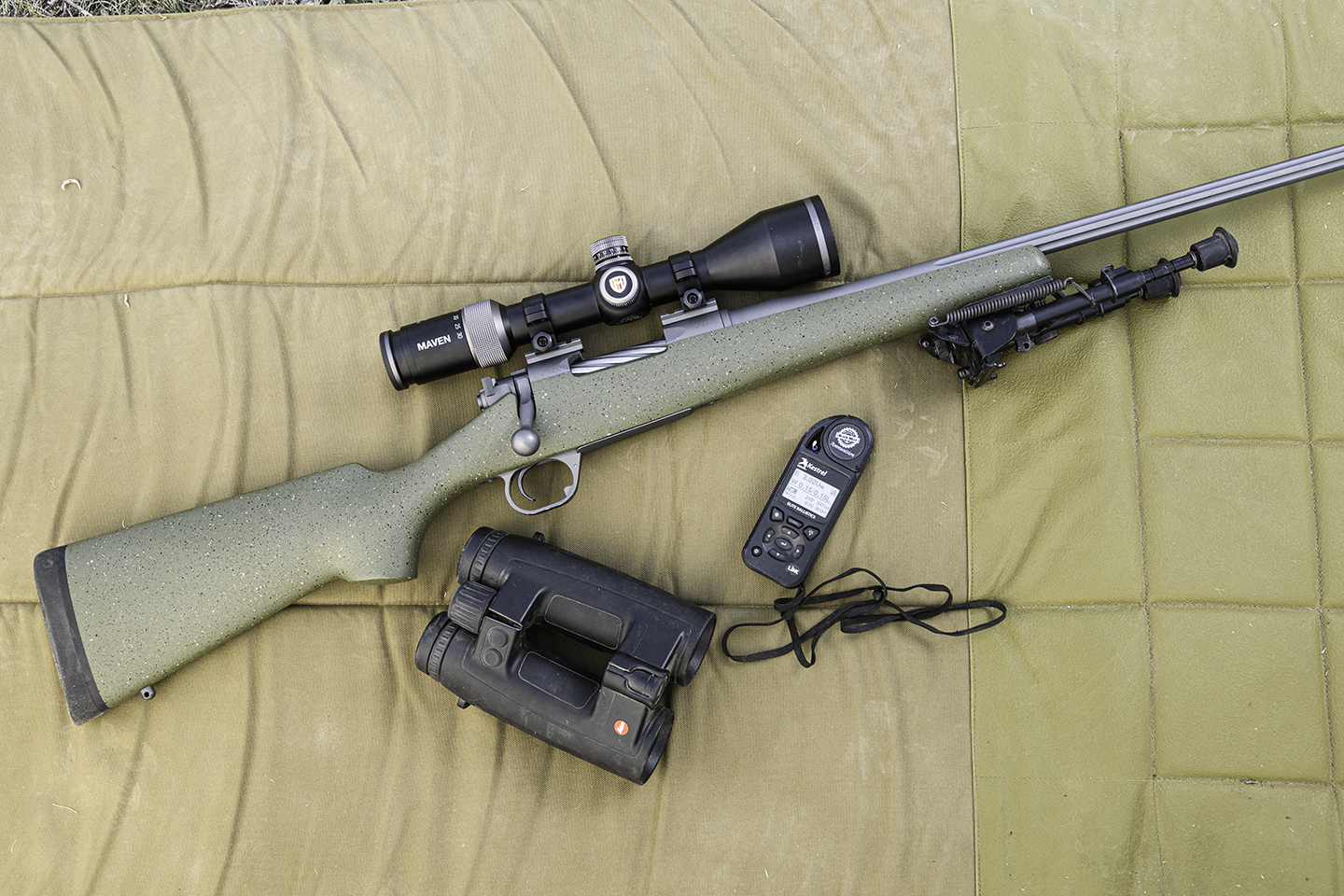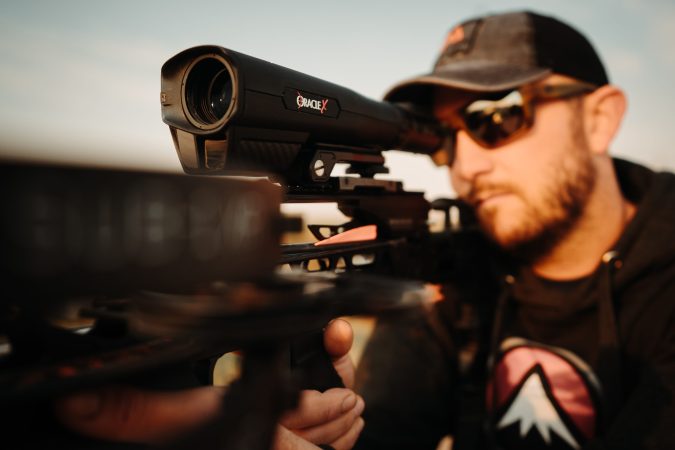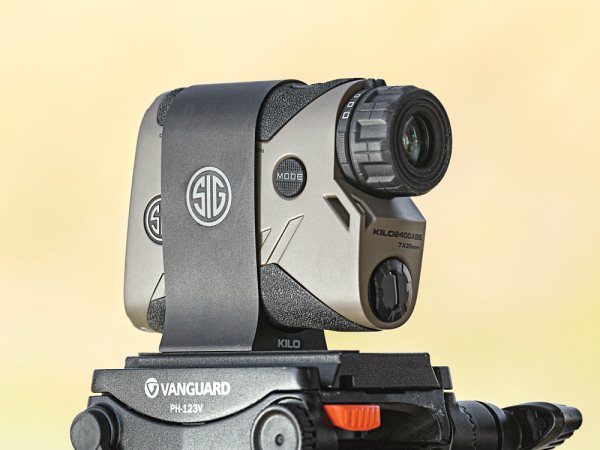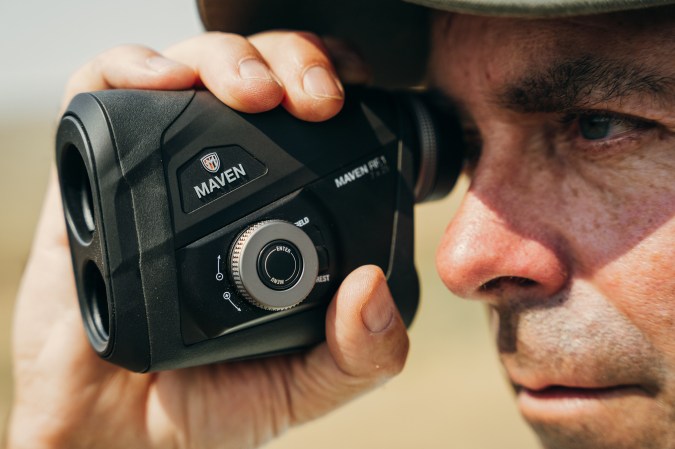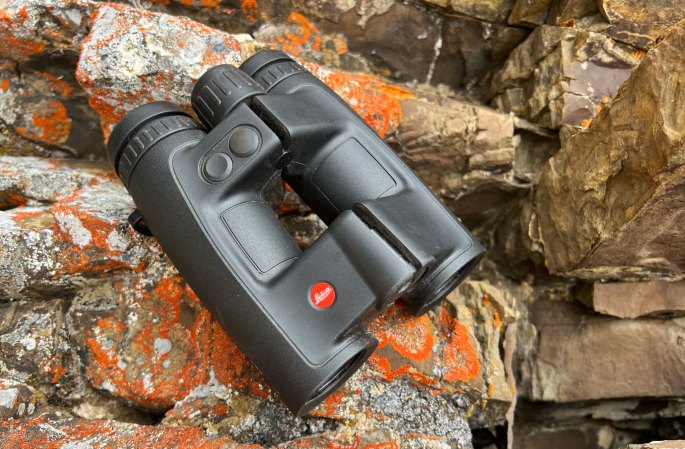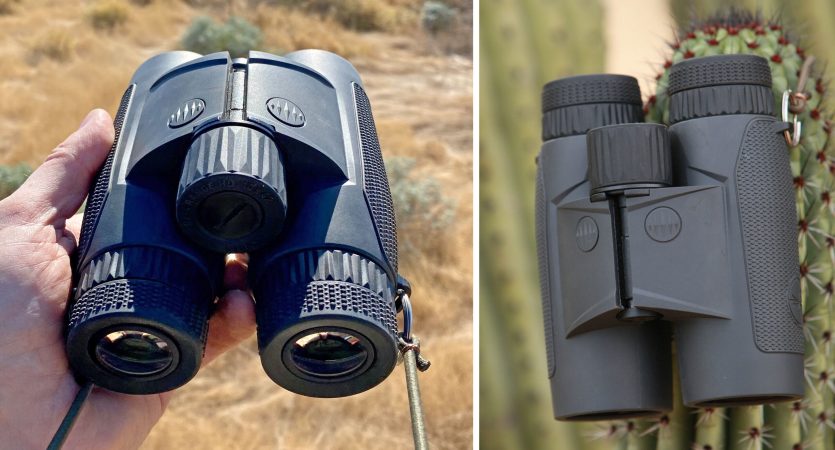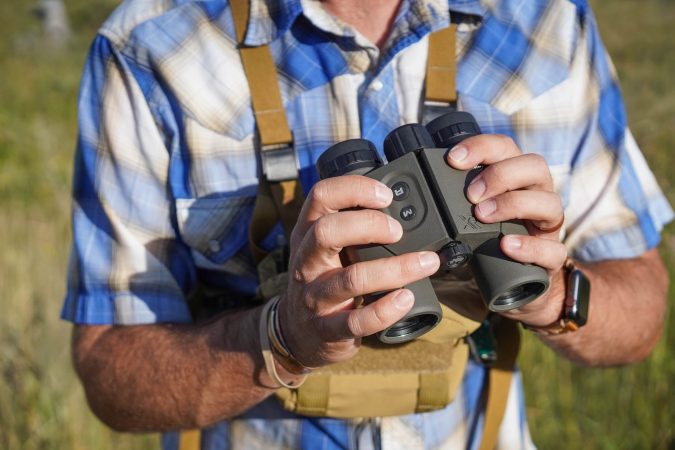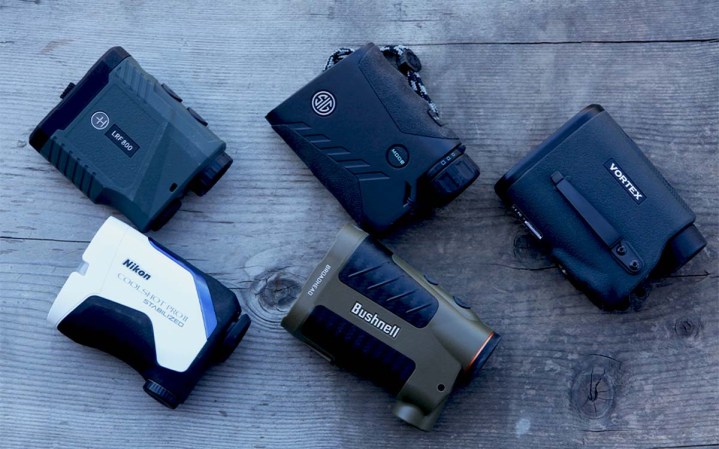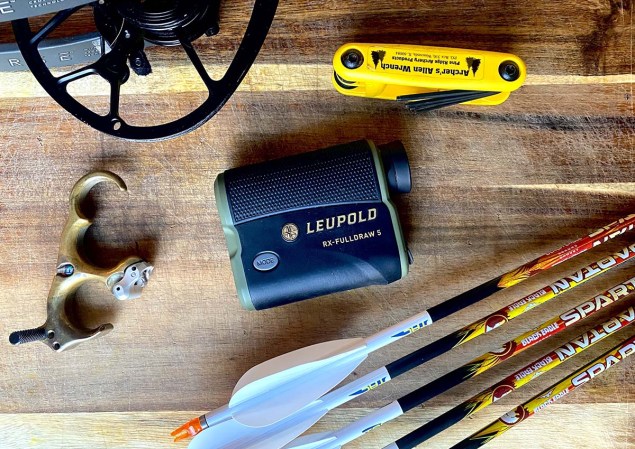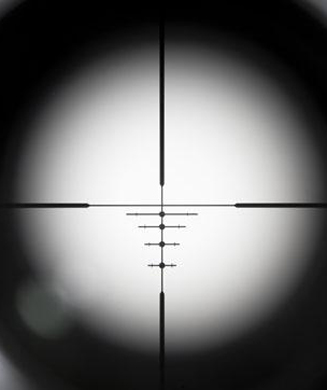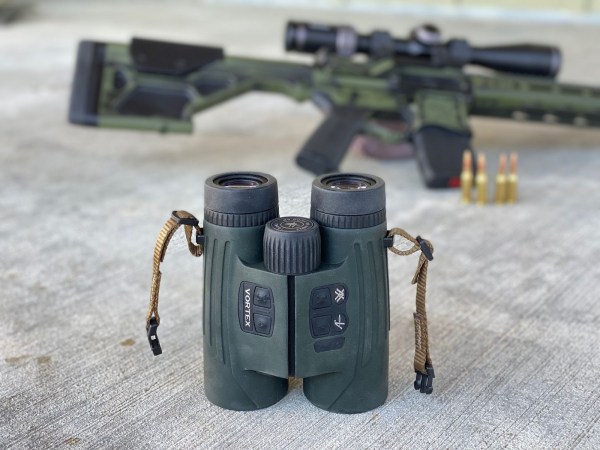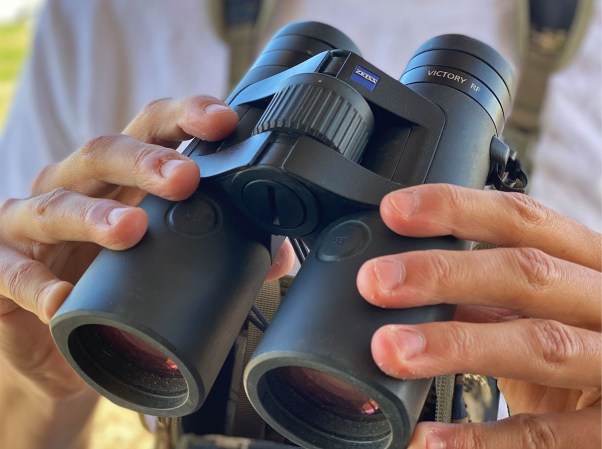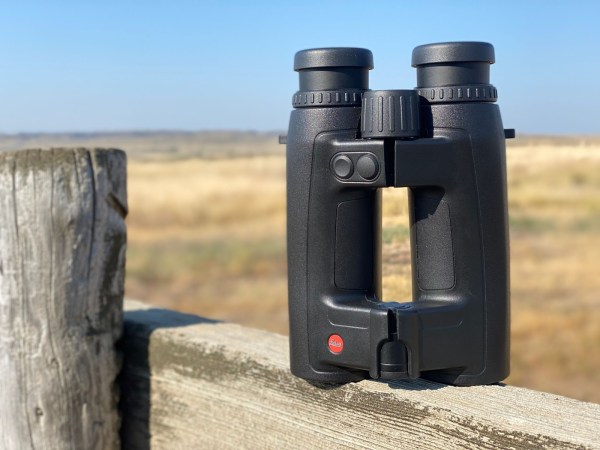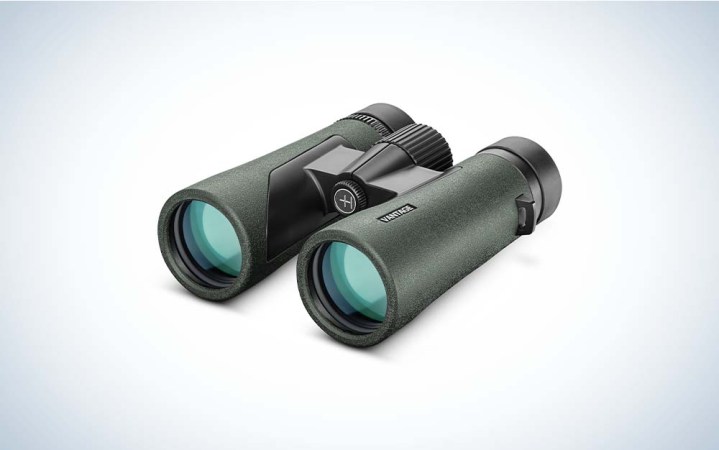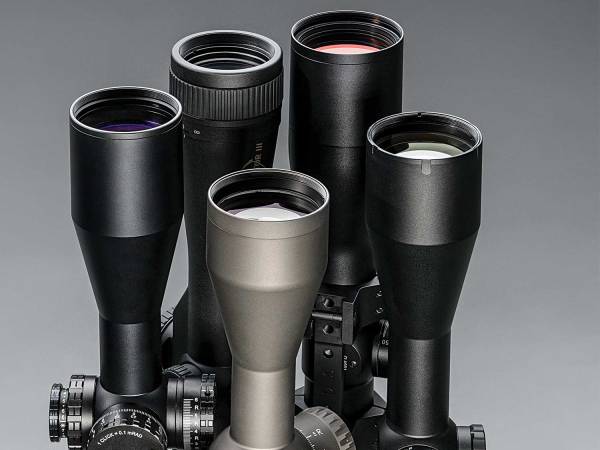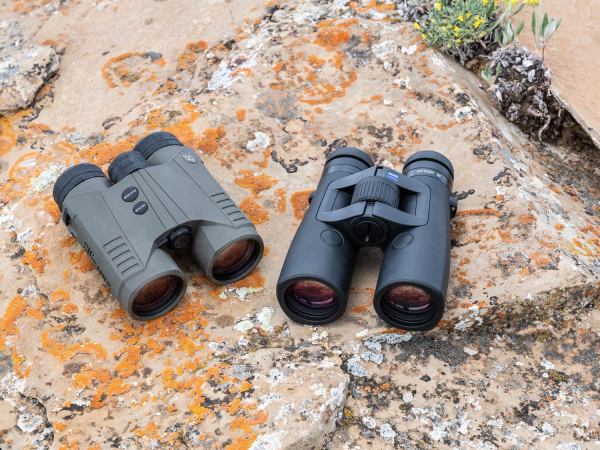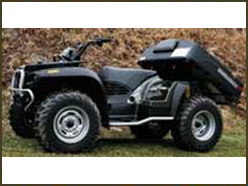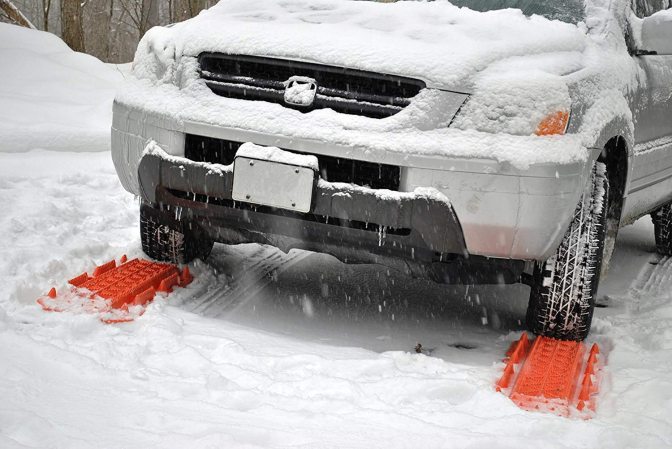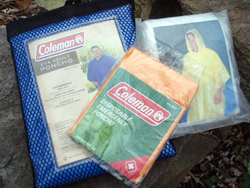We may earn revenue from the products available on this page and participate in affiliate programs. Learn More ›
To shoot successfully at longer ranges you need more than just an accurate rifle and ammo. You need data. Instruments that give information on target distance and environmental conditions work with ballistic software to provide accurate firing solutions. So, rangefinders, wind meters and ballistic computers have become vital components in the long-range shooter’s tool kit.
Learning to use this equipment the right way is one of the most underrated (and underdeveloped) long-range shooting skills. These are some of the tips and tricks to getting the most out of your electronics.
Rangefinder Skills
One of the first things to do with any new rangefinder is to figure out where the beam is actually going. Rarely does the aiming point in the viewfinder perfectly align with where the beam strikes. This becomes critical when trying to get distances on challenging targets. Common scenarios include targets that are tucked in timber or other vegetation, and targets that are on flats that don’t have well-defined backstops. Unless you know exactly where your beam is striking it is easy to end up with an incorrect reading.
To “zero” your rangefinder, choose a flat medium-sized target that’s facing you and has well-defined edges and also has a good easy-to-range backstop some distance past it. A stop sign with trees behind it, or the chimney of a house with another building behind or something similar will work.
Laze the target repeated along its edges and just outside its edges. At some point you will see that the aiming point doesn’t match up with the distance you’re getting. That will indicate where the offset exists in your unit.
If you find that your beam is actually at 12 o’clock in relation to the aiming point, for instance, you’ll know that you should use a 12 o’clock hold on distant and challenging targets.
Another good tip is to laze the base of the target to get an accurate distance. When shooting a steel target on an elevated t-post it can often be easier to get an accurate reading by hitting the spot where the post goes into the ground.
Game animals tend not to be as reflective as other objects, so if you’re having a difficult time getting a distance on an animal, laze a nearby green bush or tree instead.
Wind Meter Skills
Unlike a rangefinder that gives exact data—the distance to the target—a wind meter provides a first, best guess. Getting a good wind reading at the shooting position is the initial step toward making a good wind call.
To get the best read from a wind meter, make sure to point the back of the unit directly into the wind. I keep a bit of surveyor’s tape on my tripod that I use as a wind indicator to determine the correct vector, but there’s nothing wrong with licking your finger and sticking it in the air as well. Tossing a bit of dirt or grass in the air can accomplish the same thing.
While taking the reading, hold the meter high above your head. If you’re tucked down in the terrain, try to get to an exposed high point nearby if possible. That will give you a better read.
Wind flows across the ground the way water moves down a river. Friction at ground level slows wind down. Higher up, the wind is always moving faster. (An exception can be if you’re on a bluff where wind is being funneled up to your position. That strong breeze, usually in your face, is often not a good indicator of what’s happening over the course of a bullet’s flight.)
On long shots your bullet will fly high above the ground in that faster wind vector, so you’ll need to take that into account when figuring out a wind solution.
Conversely, shots that go downhill into a gulley will often experience less wind than what you’re reading at the shooting position. Learning how wind behaves in different types of terrain will help you refine your guess and make better calls.
Ballistic Apps
Distance and wind are two of the critical inputs for getting a firing solution. The thing that does the work is a ballistic calculator, which is either an app on a device or a self-contained unit like a Kestrel or rangefinding binocular with on-board ballistics.
There are very good apps that are available for not much money (or free) that you can use. Two of the best are the Hornady 4DOF app and AB Mobile.
When setting up an app with the inputs from your rifle and ammunition the best thing to remember is, good data in, good data out.
You’re going to want to chronograph your ammunition to get an accurate muzzle velocity. The calculators need a good ballistic coefficient value or drag curve model for your bullet. (Some apps will populate that automatically from a drop-down list.)
You’ll also need good measurements from your rifle, such as the twist rate of your barrel, and the exact placement of your rifle’s zero. The height of the scope above the bore is also key. Measure that with either calipers or a measuring tape with 1/16th inch marks.
Lastly, you’ll need to enter in other environmental data, including temperature, barometric pressure and humidity. (Though humidity is the least important of these.) Some units, like the Kestrel, measure environmentals for you. Other times you’ll need to grab that data from a nearby weather station and input them yourself.
Once this is done, you’re ready to start shooting. If your inputs are good, you should be ready to rock and roll out to 600 yards. Once you start going beyond that—and certainly once you’re past 1,000 yards—you’re going to need to fine tune your dope, which we’ll cover in the next article.
Previous Articles in the Go Long Series
• Getting the Most Out of a Precision Rifle Scope
• Expert Guide on Mounting a Precision Rifle Scope

